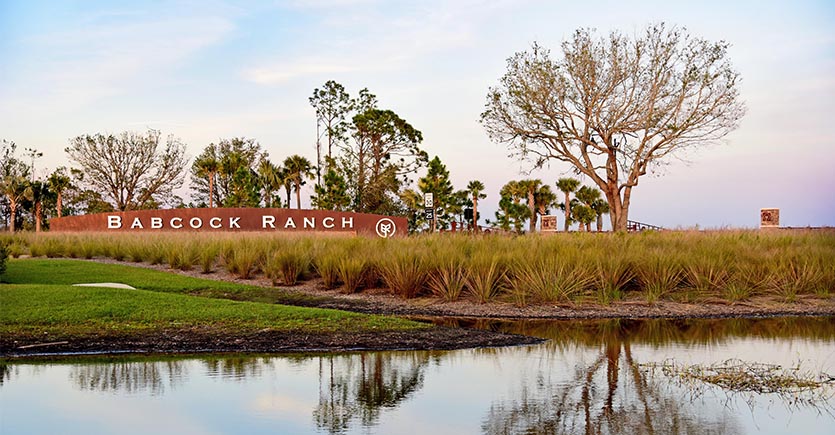When you move to Babcock Ranch, get your binoculars and long camera lenses ready to meet many of your nesting neighbors.
Surrounded by thousands of acres of wilderness, Babcock Ranch is home to a stunning variety of resident and migratory birds. Don’t be surprised to see spotted peregrine falcons, bald eagles, wood storks, wild turkeys, sparrows, owls and egrets.
At Babcock Ranch, you’ll be able to bike or walk trail systems totaling 50 miles of preserved and restored ecosystems, giving you a chance to spot many other birds and wildlife. Before you hit the trails, visit Babcock Ranch’s outdoor outfitters store for all the latest gear. But you won’t have to go far because wildlife will be all around you when you move to Babcock Ranch. For example, you can rent a kayak at the town square to paddle on Lake Babcock and then dine at the lakefront restaurant to view the wading birds hunting for their meals.
Babcock Ranch Town Makers have taken special care to improve the existing flow ways and wetland ecosystems because of the importance of water for wildlife. Fact is, the town’s integrated water management system is setting a new standard for watershed protection, flood control and water-demand reduction. Whether you’re an experienced trail hiker or you’re witnessing Florida’s abundant nature for the first time, listen to the town’s planners discuss how nature is such an integral part of living at Babcock Ranch.
Birds at Babcock Ranch
Because the town of Babcock Ranch is adjacent to the Fred C. Babcock-Cecil M. Webb Wildlife Management Area, you’ll see many of the bird species that have been sighted there by the Florida Fish and Wildlife Commission. These include:
- Bachman’s sparrow: Although its breeding habitat once extended to Ohio, Bachman’s sparrow is most abundant in Florida because of the presence of longleaf pine forests. Spring and summer is the best time to hear their loud songs, which begin with a loud whistle followed by an extended trill.
- Red-cockaded woodpecker: This bird gets its name from the small red streak that is hardly visible above the cheek of the male. The woodpecker can reach nine inches in length, so you should be easy to spot. Its head is black, its belly is white and it has a barred black and white back. Its nesting season is between April and June. The bird is listed as an endangered species because its habitat of pines has been shrinking.
- Burrowing owl: The burrowing owl nests in burrows it digs in the ground on open prairies such as pastures and fields. Nesting season occurs between October and May, with March being the primary time for laying eggs. The burrowing owl is one of the smallest owls in Florida and unlike other owls it is active during the day.
- Limpkin: In the U.S., the limpkin is only found in Florida. It’s a long-legged species of water bird that has dark-brown feathers with streaks of white on its head and neck. Limpkins feed primarily on apple snails and nests in marshes and trees from February until June. Limpkins can grow to be 28 inches long.
- Southeastern American kestrel: The Southeastern American kestrel is the smallest falcon in the U.S. This species has a brown back with black flecks and a white belly. It lives year-round in Florida, though its life expectancy in the wild averages just 15 months. Breeding season lasts from March until June. It feeds primarily on grasshoppers and lizards.
You can download a handy list of birds from the commission’s web site here. The list includes information about what seasons they appear, whether they breed in the area and the likelihood that you’ll spot them.
If you’re new to birding at Babcock Ranch, check out some tips about how to select binoculars and other useful information by clicking here. There are also local resources such as Audubon of Southwest Florida that highlight bird clubs, events and conservation efforts.





